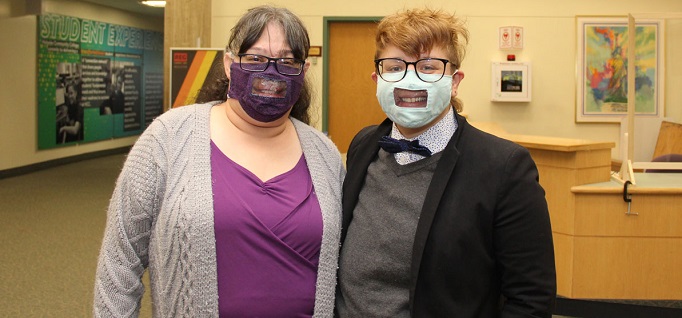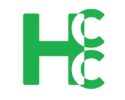See more smiles
By Ronni Gordon
December 10, 2020
Inspired by a student, a Holyoke Community College literacy specialist launches accessible face mask campaign
As the pandemic wore on with no end in sight, Jackie Santana grew more and more frustrated.
The proliferation of masks and other face coverings to help stop the spread of COVID-19 had made daily life much more difficult for her, a deaf woman who depends on lip-reading as well as sign language to communicate.
This was particularly apparent in places like grocery stores, where cashiers sometimes got angry when they couldn’t understand her or she couldn’t understand them. Some outright refused to write down what they were trying to say.
Santana wrote about her experiences in the spring newsletter published by the Holyoke Community College (HCC) Ludlow Area Adult Learning Center, where she is a student.
“People sometimes use pantomimes or gestures to get my attention,” she wrote. “But it’s hard with those masks. Hearing people don’t realize when they have their masks on, they’re covering their mouths, and they don’t realize how important it is for deaf people to see them talking.”
She explored buying masks with clear mouth windows, but the companies that manufacture them were all sold out at the time. With some 48 million deaf or hard of hearing people in the United States, according to statistics, demand had outstripped supply. “It would be nice to have more masks that let you see people’s lips,” Santana wrote.
Enter Ash Aliengena, a literacy specialist at HCC’s Ludlow Adult Area Learning Center. Inspired by Santana’s essay, Aliengena decided to start making masks with clear plastic windows and created a website offering free accessible face mask patterns, where people can “Click. Print. Cut. Trace. Go.”
Aliengena’s “See More Smiles” campaign is a collaboration with HCC’s Office for Students with Disabilities & Deaf Services (OSDDS), which is helping to spread the word. To date, Aliengena, who uses the pronouns they/them, has hand-sewn more than 60 masks and given most of them away to people they work with at the center and to public school teachers in Holyoke.
“Jackie’s essay opened my eyes to the need for window-ed masks,” Aliengena said. “Her self-advocacy got the whole thing started.”
From inspiration to development
Aliengena started by researching existing mask patterns and then created an original design that uses clear, heavy plastic for the mouth window. The patterns and instructions are available for free on the See More Smiles website Aliengena maintains. There are patterns for both adult and child sizes along with photographs of finished products. The patterns print true to size on standard 8.5 by 11-inch copy paper or card stock so they can easily be cut out and traced onto fabric.
“I feel great about this project,” Santana said recently. “I think it is a great idea.”
As far as the effectiveness of masks with plastic windows to combat the spread of COVID-19, David Aronoff, director of infectious disease at the Vanderbilt Institute for Infection, Immunology and Inflammation, recently told National Public Radio that the virus cannot penetrate plastic or solid materials, “so see-through masks provide potentially a great option for balancing infection prevention with the desire to be able to see somebody’s mouth move.”
Aliengena gave one of the windowed masks to HCC President Christina Royal. She wore it recently on a visit to the dentist, where it drew a lot of attention from office staff, who asked for the link to the “See More Smiles” website.
Royal said Aliengena’s masks are a “great reflection of universal design principles” – an accommodation beneficial for deaf and hearing people alike.
“Windowed or clear face masks allow everyone to see and read each other’s mouths – to speech read,” said Aliengena. “These masks are intended to restore important modes of visual and emotional communication that get lost when we cover our faces with solid masks.”
Those visual and emotional cues, like seeing people smile, can make a world of difference.
“For certain populations visual communication is even more important: the elderly, children, language learners, and those in mental health crises are just a few examples,” they said. “For members of the deaf and hard of hearing community, visual communication is absolutely central So, when the pandemic started, millions of people who rely on seeing faces and mouths, suddenly lost their primary mode of communicating with the hearing population overnight, just like that.”
This article was originally posted here.



